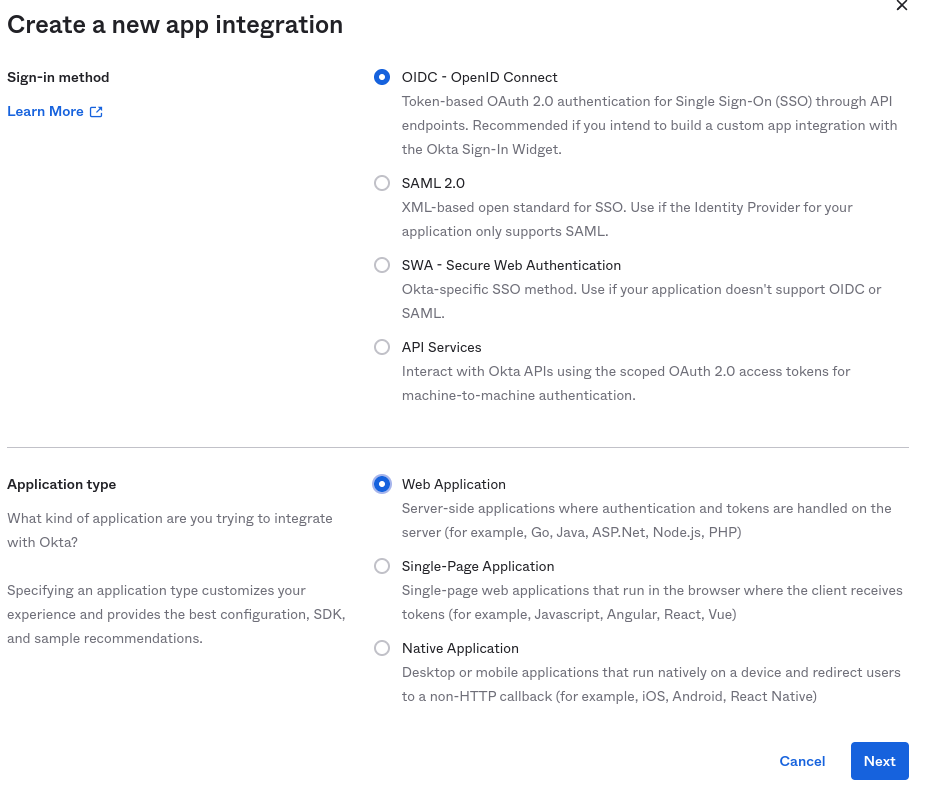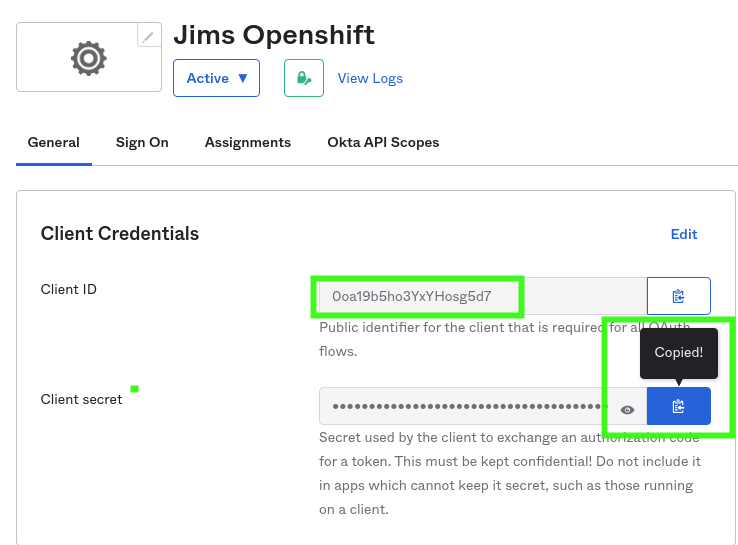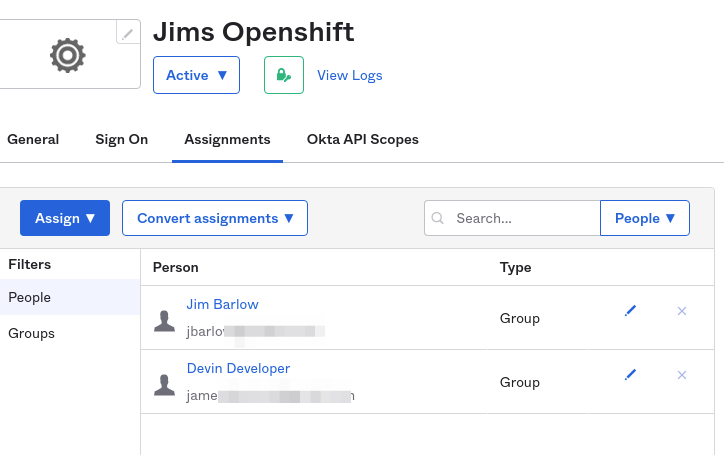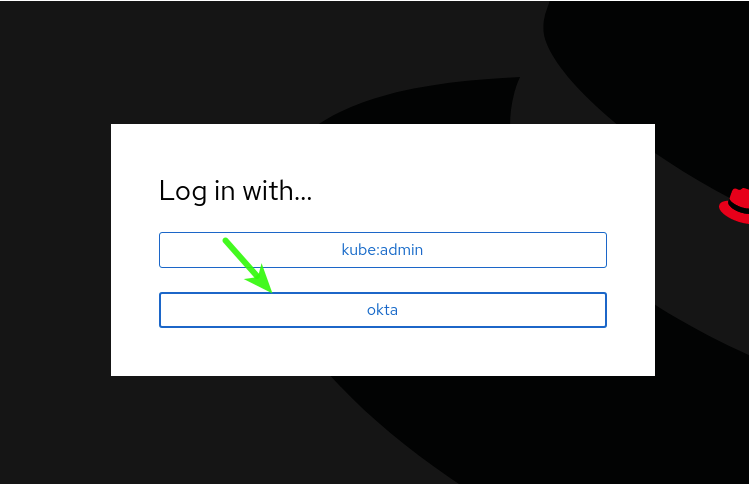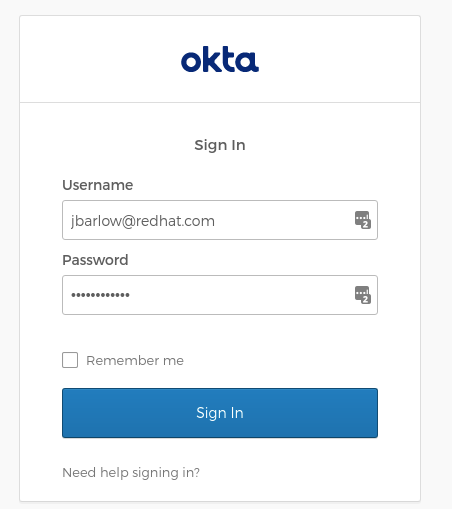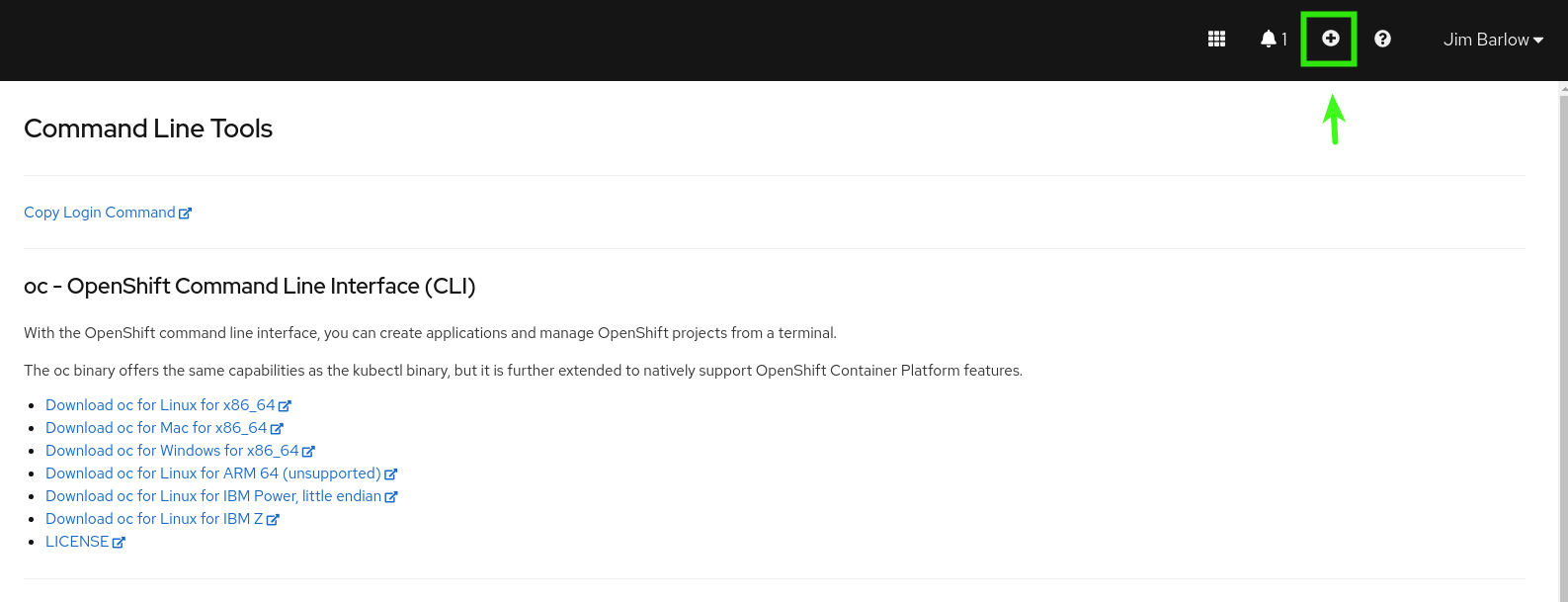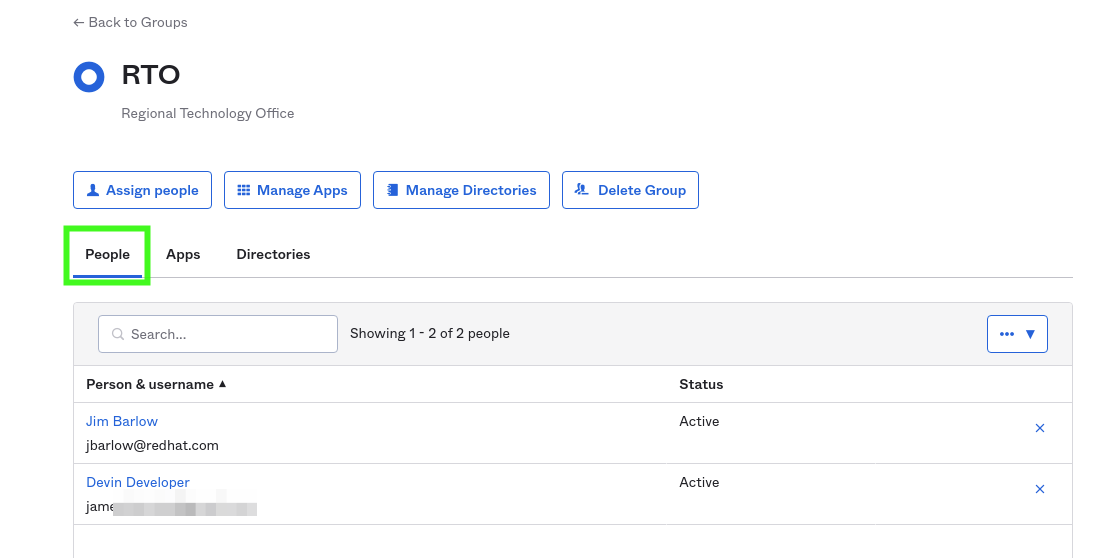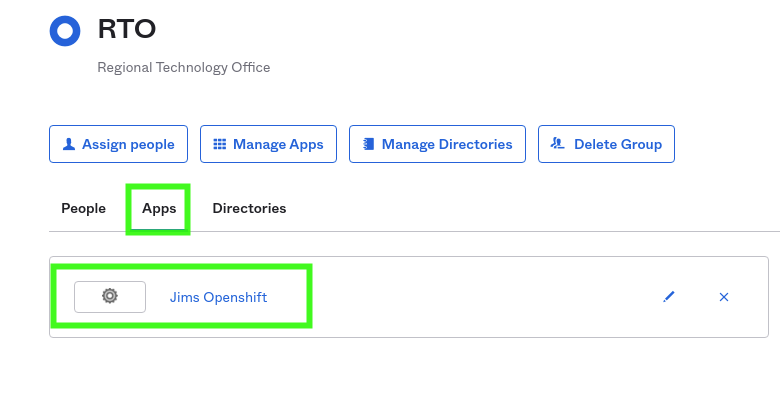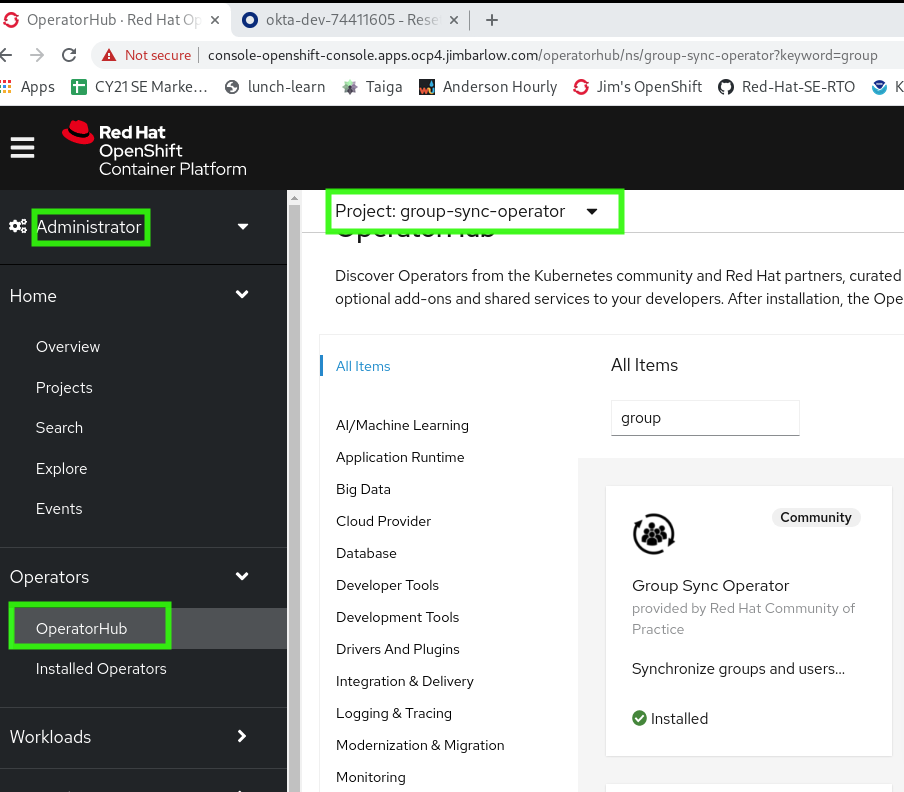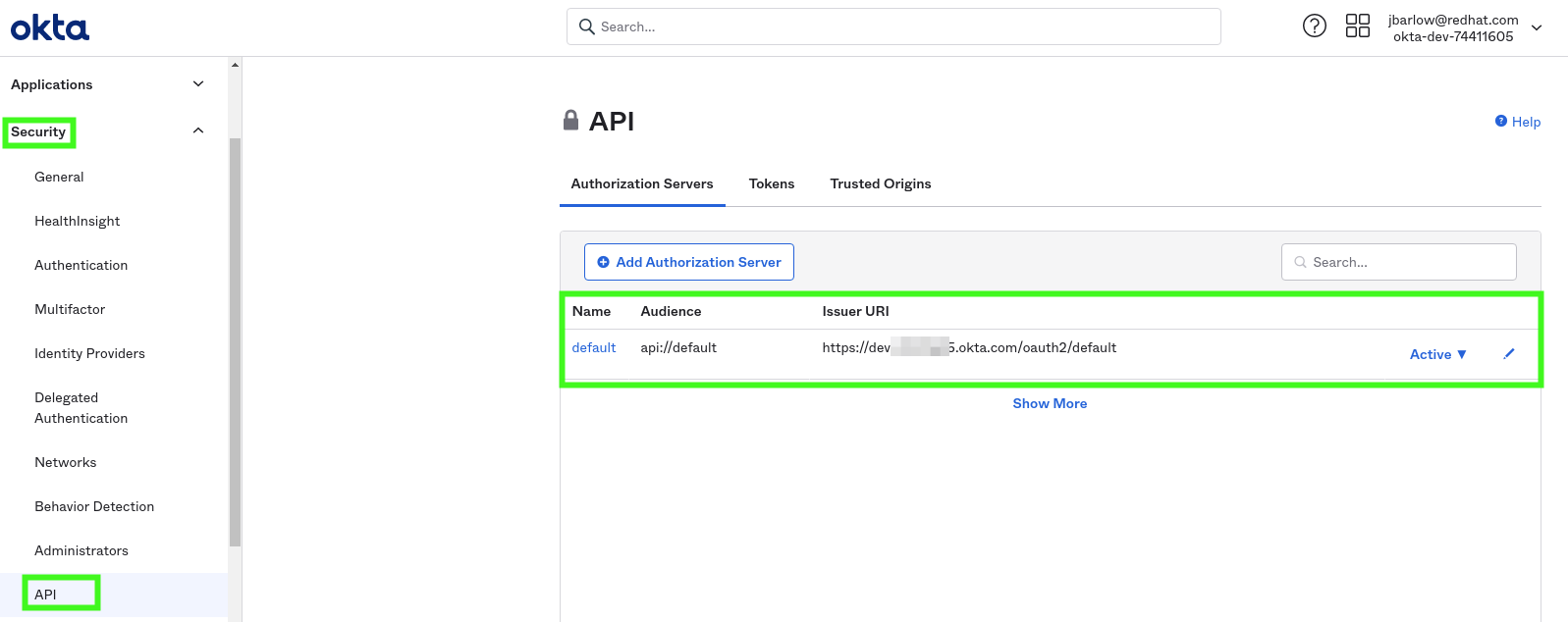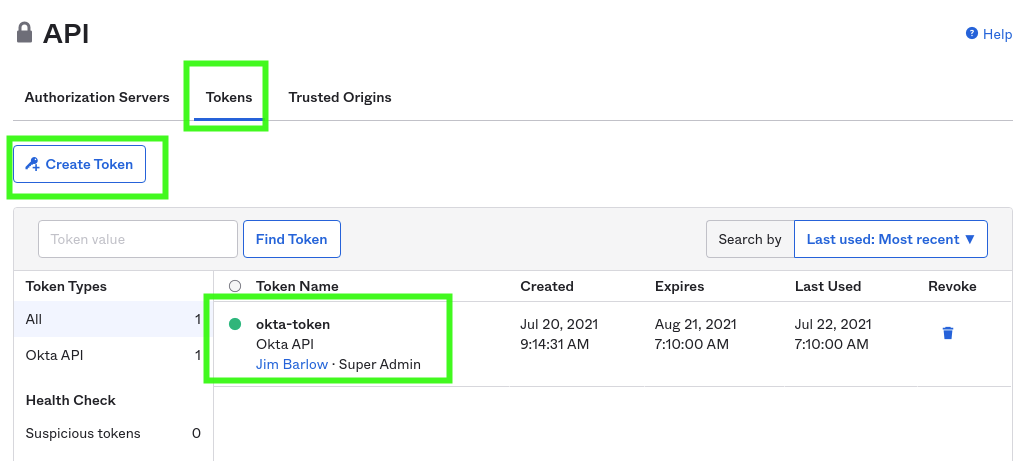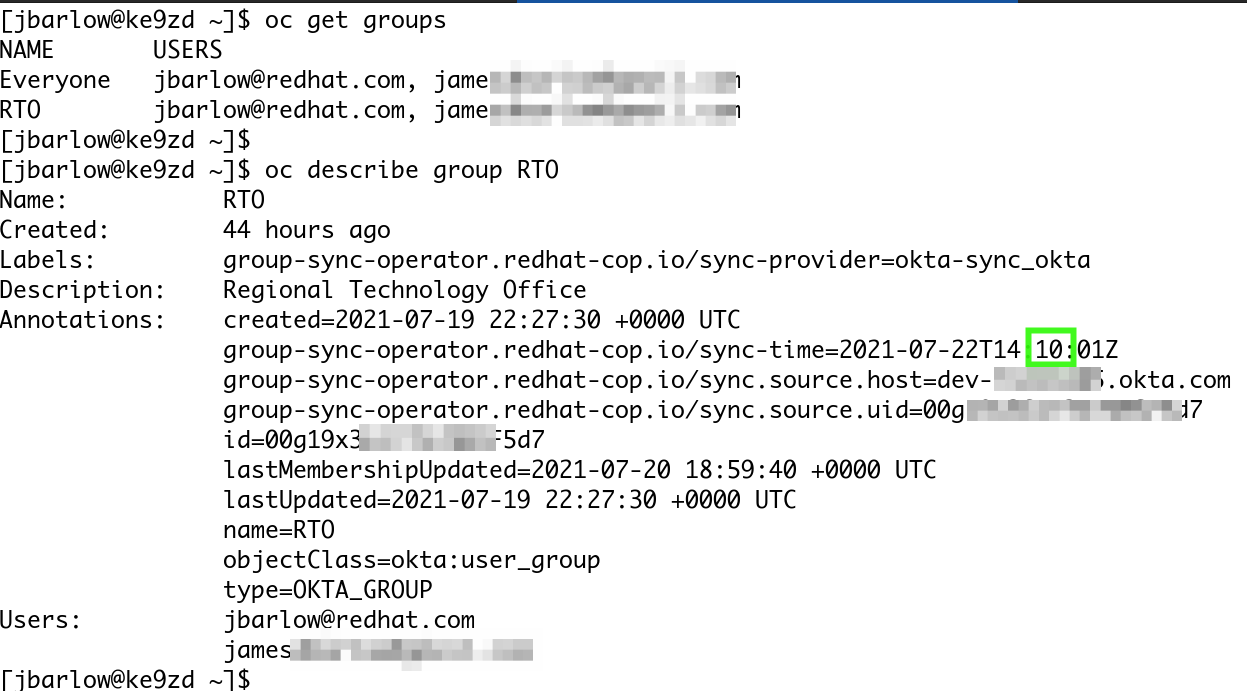Configuring Okta and OpenShift as OpenID Authentication
Okta is a popular Oauth2 OIDC Identity provider for enterprises. It is used as a service from Okta.com, and is also an Open Source Project
Obtaining an Okta Developer’s Account
At the time of this writing, a limited Okta account can be obtained at https://developer.okta.com/signup/.
Authentication with Okta
We must create an App-Integration.
Creating your Okta App for OpenShift
With your developer account, the first step is to go to the dashboard and add an app. Select "Create App Integration"
We will be using the OIDC OpenID Connect strategy here.
At this point we will need to gather the Client ID and Client secret for the OpenShift Side.
Group Synchronization with Okta Groups
And at the bottom of the page, note the oauth-openshiftapps
oc whoami --show-server
To find your oauth-openshift route you may issue the following command:
oc get routes -n openshift-authentication -o jsonpath="{.items[*].spec.host}"
Assign Users
Assigning a user will help us log in as that user! Assigning a couple of users will let us experiment with groups later.
Create the Provider in OpenShift
We will apply a manifest we describe as below, put this in a file called "okta-config.yml"
kind: OAuth
metadata:
name: cluster
spec:
identityProviders:
- mappingMethod: claim
name: okta
openID:
claims:
email:
- email
name:
- name
preferredUsername:
- email
clientID: 0oa19b5ho3YxYHosg5d7
clientSecret:
name: openid-okta-secret
extraScopes:
- email
- profile
issuer: https://dev-xxxxxxx.okta.com
type: OpenIDNote three things above
-
issuer: is your "Okta domain" from your general settings when you defined your OpenShift application. This is used often.
-
openid-okta-secret must yet be defined
-
issuer is your own Okta account domain
oc create secret generic openid-okta-secret --from-literal=clientSecret=xxxxxxxxxxxxxxxx-n openshift-configNote the hexadecimal secret literal above, this needs to be replaced with your "Client secret" from your "Client credentials" in your Application General settings page
At this time we can issue the commands:
oc apply -f okta-config.ymlIgnore the complaining from the oc command about the use of create vs. apply.
Time to Log In!
Go to your console URL and make sure you are logged out.
You can guess which one you want to click.
If your browser is not logged in to your Okta account, you will be redirected to login to Okta
The result should be a successful login with your username the top right
Users in OpenShift
Users do not exist exist within OpenShift until they are first logged-in. They are then given a default group that is assigned to them, system:authenticated
Note the okta identity to show the source identity logged in. Full name is derived from the user as defined in okta, and the username is the e-mail due to the way in which we mapped it in the okta-config.yml file
Logging in from the command line
First obtain the oc (OpenShift Command) command line utility if you do not have it installed in your path.
The download location is indicated when you click the question-mark (What else would it be?) by your username.
The "Copy Login Command" link (also available from the down-arrow by your name) will yield this command line for logging in.
You WILL be prompted to re-authenticate at this time, you will get the same Okta redirect login.
Group Synchronization
If you use an OIDC or other Oauth2 provider for authentication, you will likely want to use Active Directory or some other Group tool to assign authorization.
This is covered in the documentation for OpenShift. Okta group synchronization, is provided by a community GroupSync operator found at github.com/redhat-cop/group-sync-operator
Create a Group in Okta
It is going to be the most fun if you have two or more users in the group. Here I have added myself and a mythical user Devin Developer.
The next tab lets us add the "Application" to the group:
Install the GroupSync Operator
As an cluster-admin capable user, using the Administrator persona (see green box highlight) find and install the GroupSync operator
We hope it ends up looking like this in "Installed Operators"
There is a lot of good help text supplied within the operator instance.
Now it is time to Create the Group Sync object.
Create a file (I called my okta-sync.yml):
apiVersion: redhatcop.redhat.io/v1alpha1
kind: GroupSync
metadata:
name: okta-sync
spec:
schedule: "10 * * * *"
providers:
- name: okta
okta:
credentialsSecret:
name: okta-token
namespace: group-sync-operator
url: "https://dev-xxxxxxxx.okta.com/"
appId: 0oa19b5ho3YxYHosg5d7The schedule is the secret sauce to keetpign things up to date. This will be in the linux crontab format schedule of the sync process. The above format says "Run this sync at 10 minutes after the hour, every hour"
The okta-token we are about to create.
the URL is the Okta domain With a trailing slash.
The appId is from section one, and is called the Client ID in the Okta application Client Credentials for our OpenShift instance.
Add an API Authorization Server in Okta
I didn’t create a new Auth Server, I’m using the default as per below:
The second tab allows you to create a token. Hey look, I’m a "super admin". I think that’s a promotion!
It is important to name the token the same as we put it in the okta-sync.yml
Now let us create our GroupSync object with the oc apply command (note the result)
$ oc apply -f okta-sync.yml
groupsync.redhatcop.redhat.io/okta-sync createdHere is the result:
We have a synchronized groups. There are a lot of extra things to do in terms of scopes, assigning roles to users and groups, etc, but this is the basic minimal operating result.
Special thanks to Michael McNeill for his highly skilled and generous assistance and Pravin Mali for his OpenShift.com blog showing the way to get started for Okta use.
Reference Resources
Pavin’s Blog:
Andrew Block’s GroupSync Announcement:
